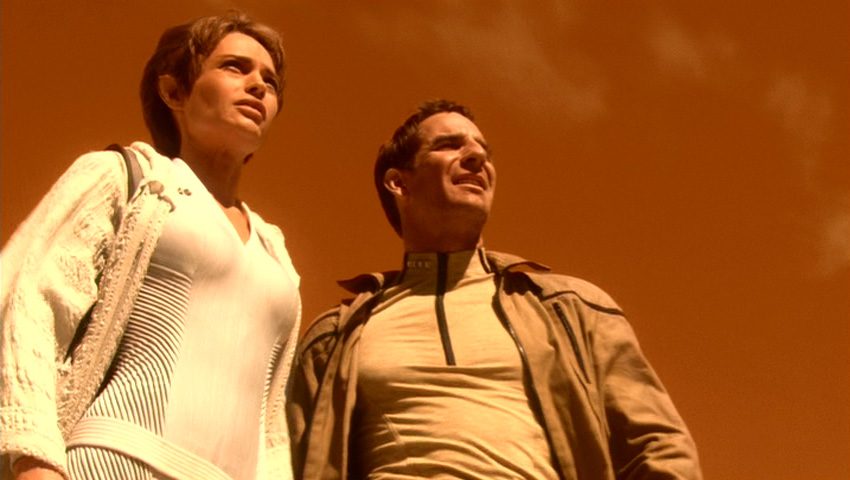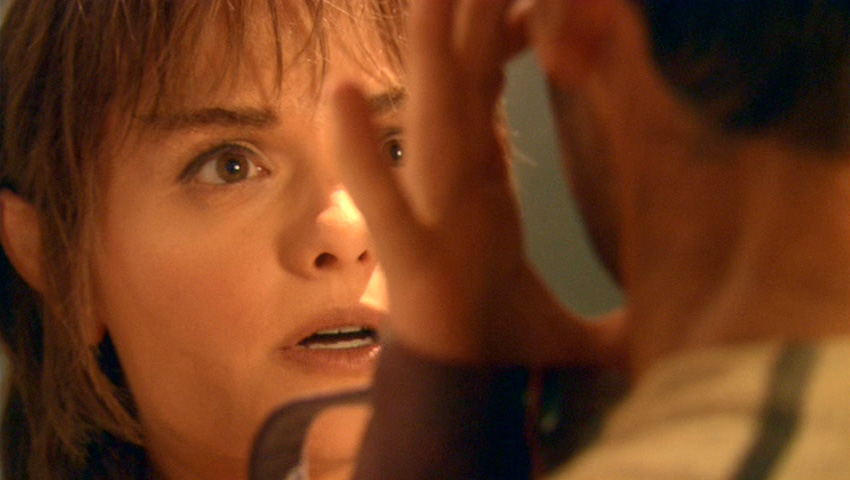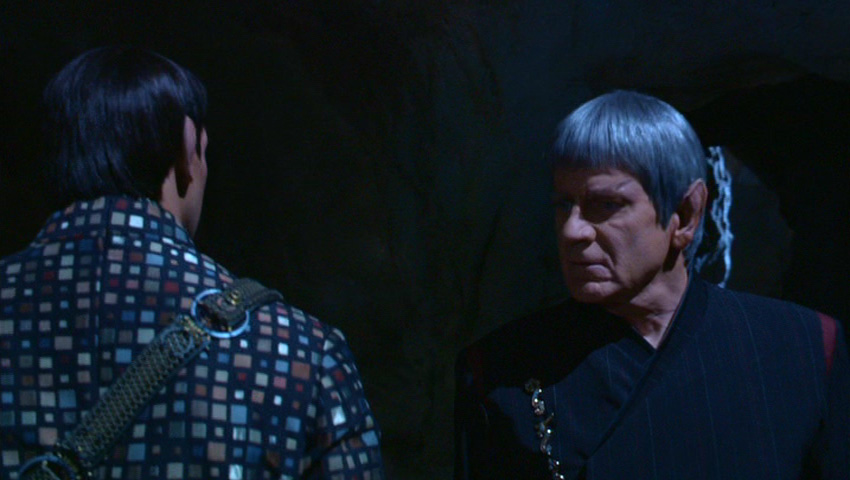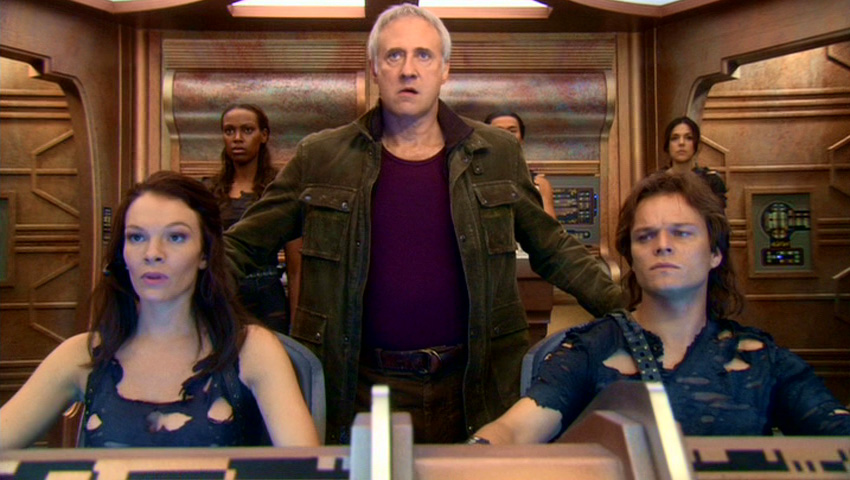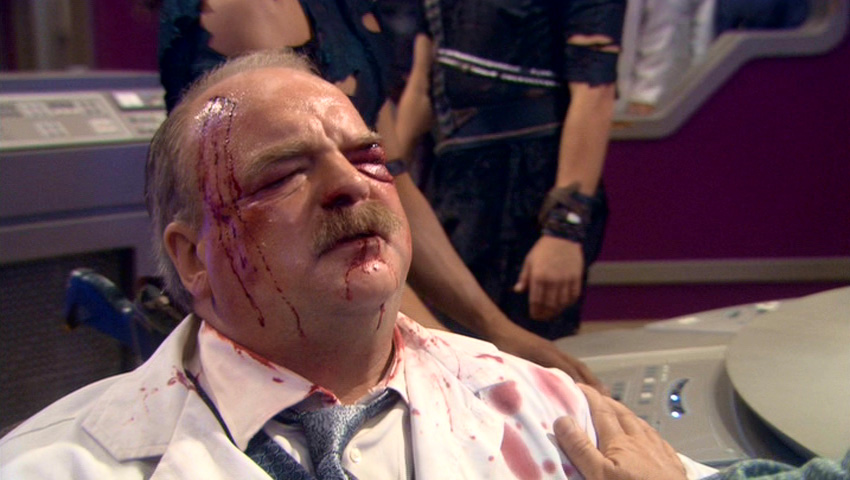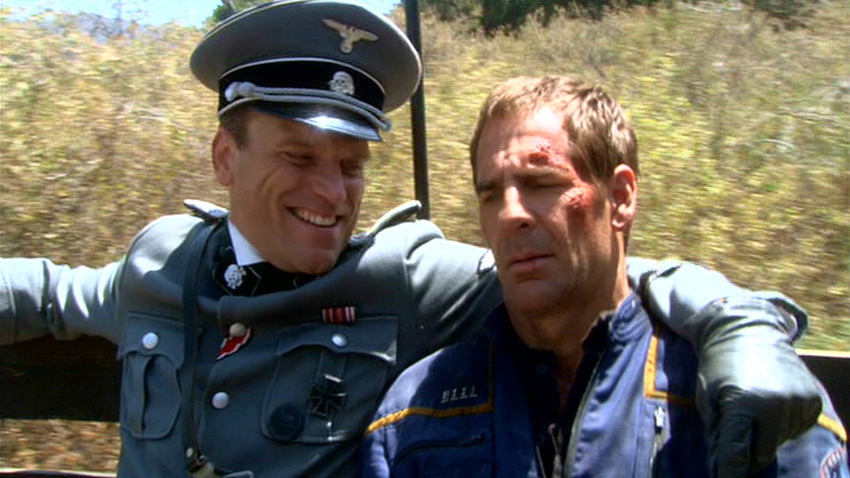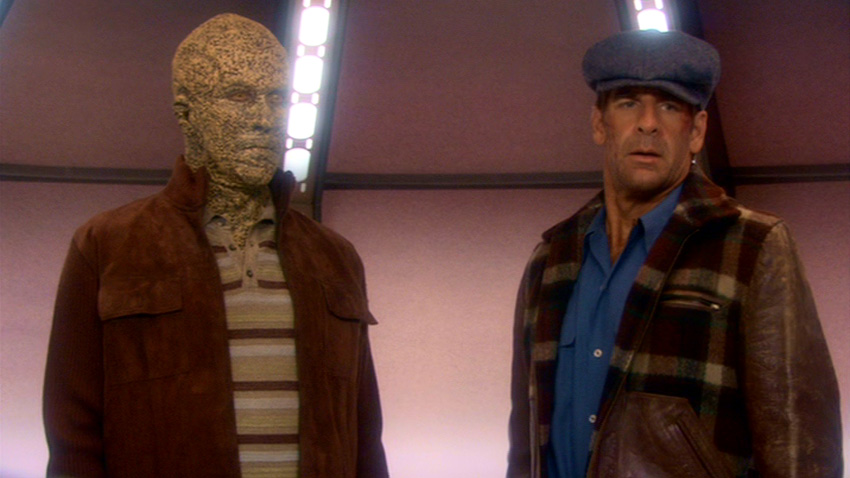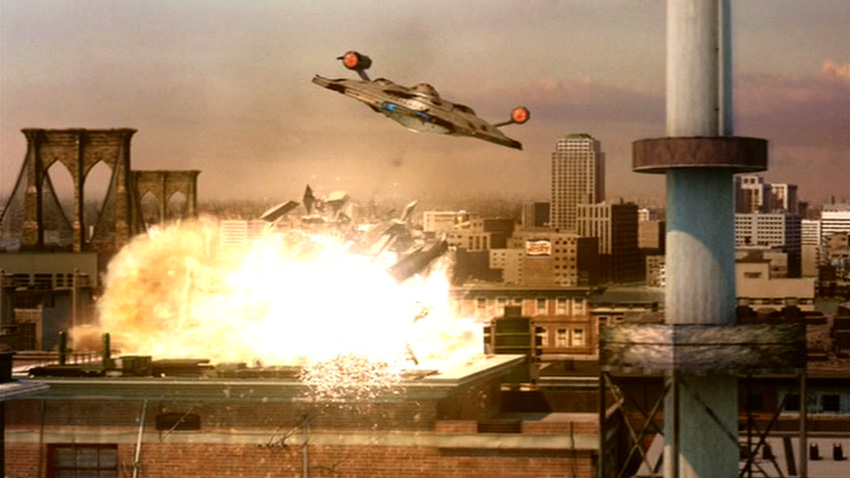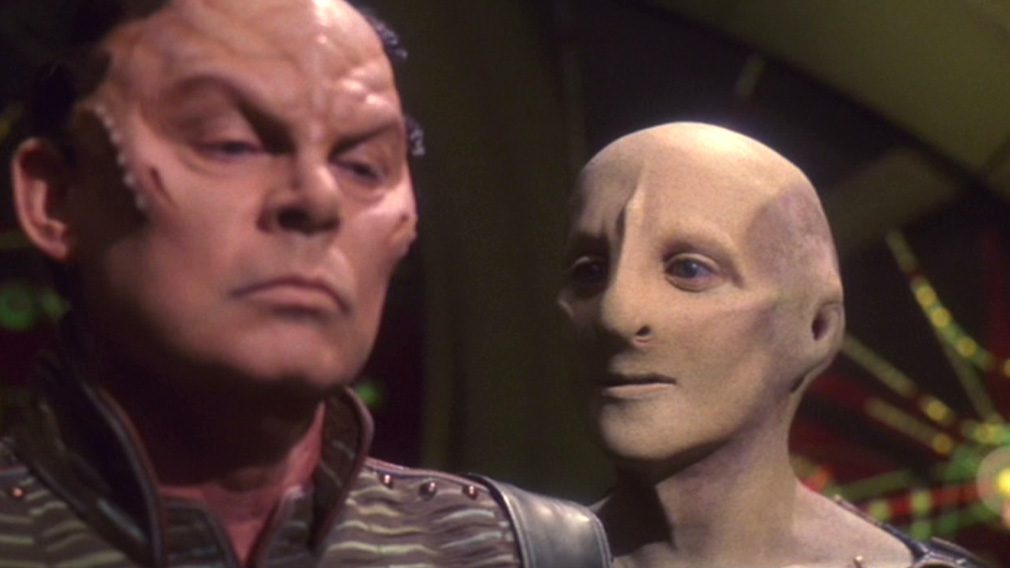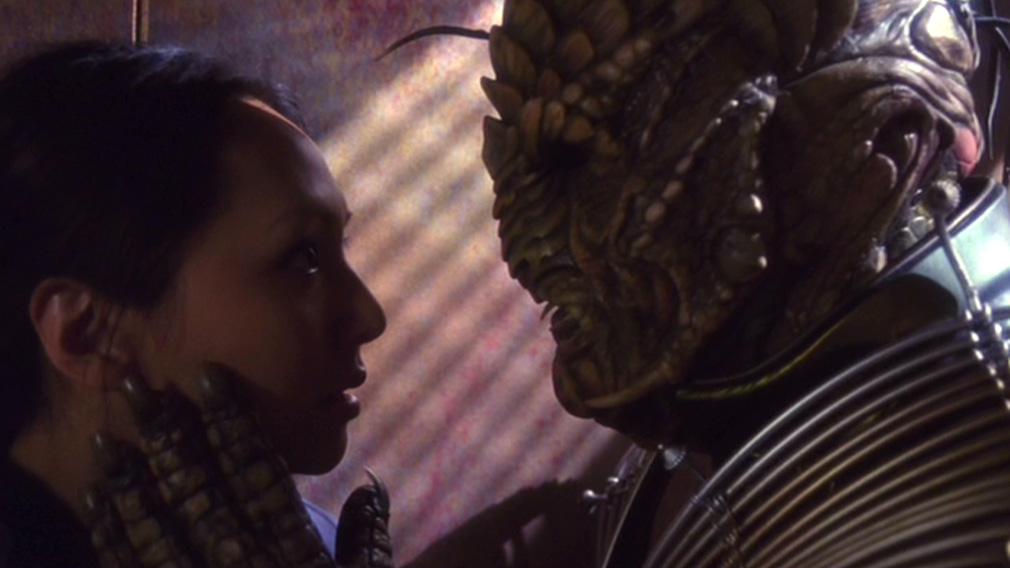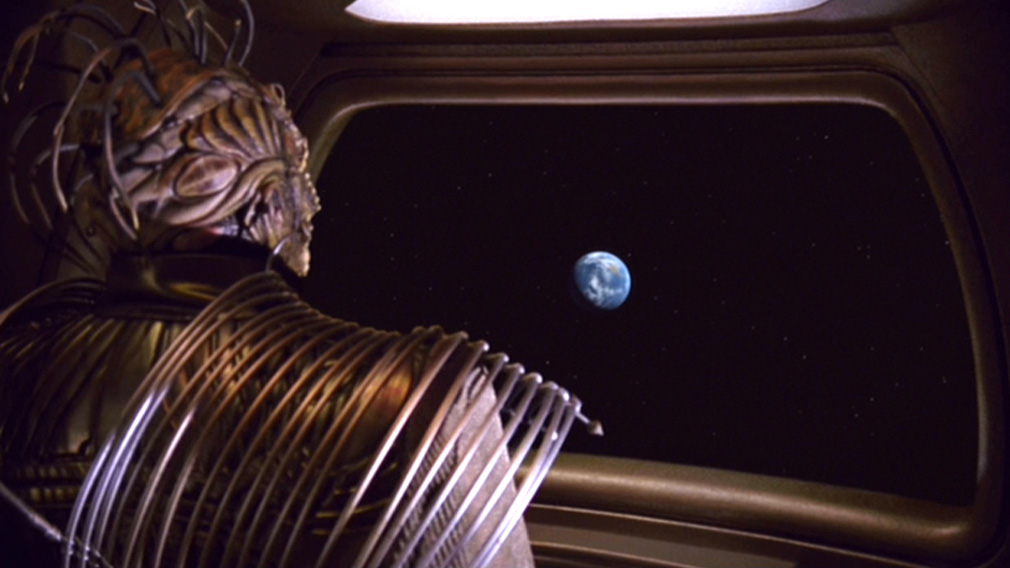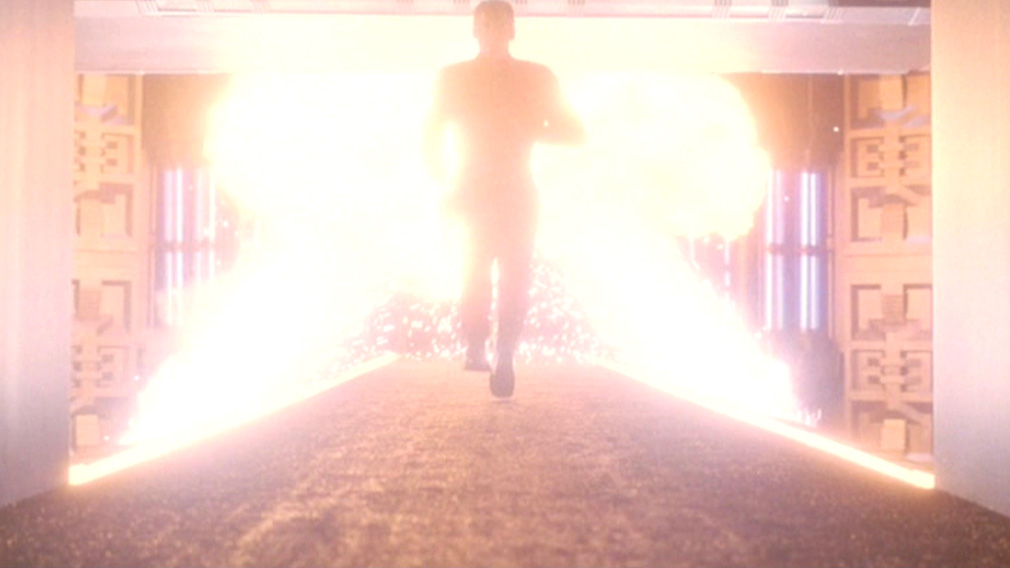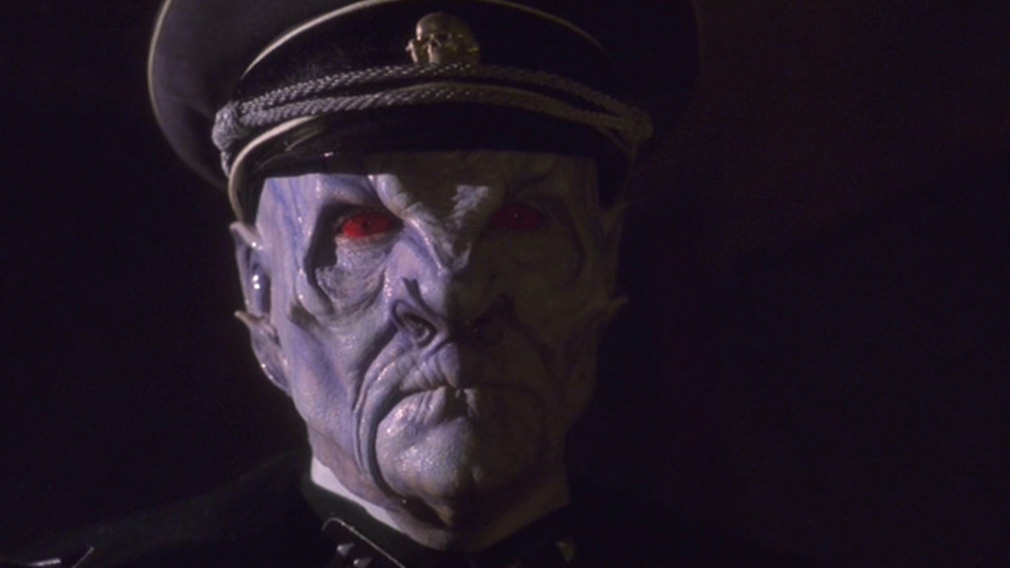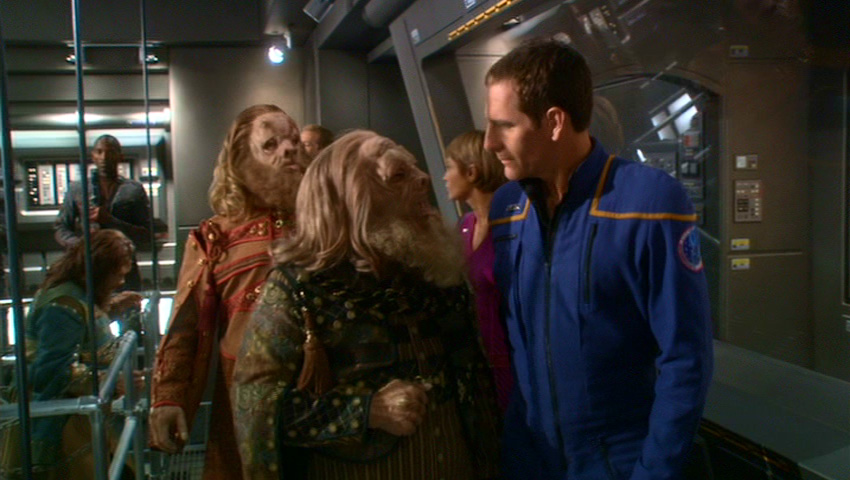
Babel One: Enterprise is escorting some Tellarites through Andorian space to a conference where Earth will mediate a dispute between the two races on the planet Babel. Along the way, the ship comes upon escape pods from Shran’s vessel, which apparently was attacked by a Tellarite ship and was destroyed, resulting in the death of most of Shran’s crew. Shran’s out for revenge, but Archer is skeptical that the Tellarites would attack on the eve of the Babel meeting. It’s then learned that the power signature of the ship that attacked Shran’s wasn’t Tellarite and most closely resembles readings Enterprise encountered in the Romulan minefield two years earlier. Enterprise is then attacked by a vessel that looks Andorian, but has the same Romulan power signature. Apparently, the Romulans have developed a ship that can project the image of others and is trying to destabilize the region. That ship has mechanical issues, and Tucker and Reed are able to board it to find some answers. Meanwhile, Shran and Talas, (seen in “Proving Ground”) attack the Tellarite delegation, and Talas is seriously wounded. The episode ends as the Romulan ship warps away — with Tucker and Reed still aboard — and the reveal that the Romulans controlling the ship are doing so remotely, from their homeworld.
United: Tucker and Reed are still stuck on the Romulan ship and eventually figure out it’s run by remote. Meanwhile, Archer is trying to build a coalition of Vulcan, Andorian and Tellarite ships to build a detection grid to find the marauder, with Enterprise — representing the only race on good terms with the others — as the command ship. Shran agrees to participate, but after Talas dies, he demands the right of vengeance (in hand-to-hand combat) against the Tellarite who killed her. In a very TOS moment, Archer takes the Tellarite’s place — knowing it’s the only way to maintain the alliance — and finds a very clever (too much so, really) loophole that allows him to incapacitate Shran without killing him. Archer’s armada eventually finds the marauder and get Tucker and Reed off of it, while the other ships pursue the marauder. The Romulan ship gets away, but not before the feuding groups unite against a common enemy. Then, Shran, Archer and the Tellarites begin talking on their way to the summit on Babel. The episode ends with the Romulans who have been running the remote ship revealing its pilot — an odd, white-skinned Andorian.
The Aenar: Turns out that white-skinned Andorian was a member of the Aenar, a sub-species of the Andorians, who are blind telepaths. Enterprise (with Shran along) heads to Andoria to find out why an Aenar would cooperate with the Romulans, and learn that one of them went missing months earlier (presumably, kidnapped by Romulans). Back on the ship, Tucker builds an interface similar to the one on the marauder to try to interfere with the Aenar pilot. After T’Pol uses it and is hurt — Tucker messed up because he was worried about T’Pol’s safety — the job falls to Jhamel (Alexandra Lydon) an Aenar female — and brother of the Romulans’ pilot — who came back with Archer and Shran. Eventually, there’s a battle, where Enterprise must take on two drone ships. Jhamel gets her brother to stop the attack and the drone ships are destroyed (with the Romulans killing Jhamel’s brother). The threat ended, Enterprise heads back to Earth — and Tucker asks Archer for a transfer to the Enterprise’s new sister ship, as it’s become too much for him to be around T’Pol.
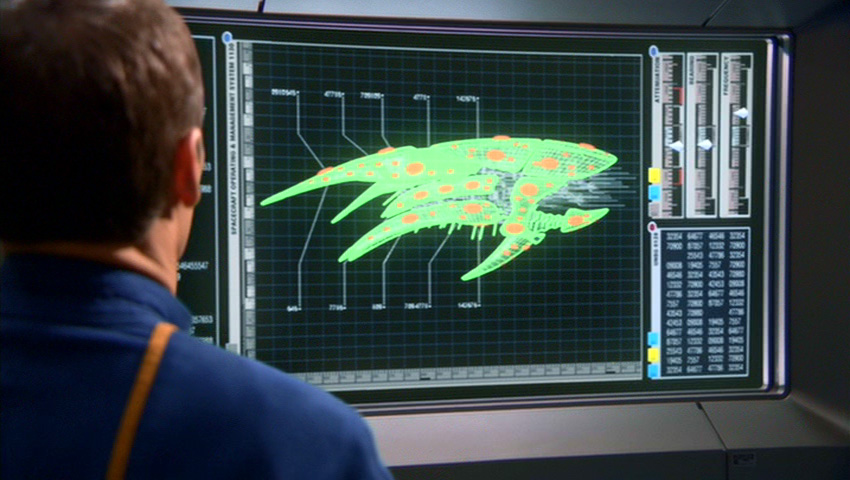
Why it’s important
This three-parter might be the most consequential of Enterprise’s final season. A quick summary of what happens:
— We see how humans, Vulcans, Andorians and Tellarites start forming their alliance. Turns out Romulan efforts to destabilize the region caused the four species to unify against the threat, a unification that ultimately leads to the Federation. Plus, we see how and why humanity takes on a leading role, even if it’s the least advanced of the races.
— We see Andoria and learn more about the Andorians, including their sub-species, the Aenar. We also see the continuing bond forming between Archer and Shran.
— We learn more about the Tellarites, though not much. Basically, they’re argumentative.
— We learn that the Vulcans have started becoming the mystics we see in TOS and beyond as a result of the previous three-parter. It’s interesting that with the dissolution of the Vulcan High Command, many Vulcans apparently left their positions on Vulcan combat ships. That makes a great deal of sense going forward, as we see Vulcans on Starfleet ships, but only sparingly. In other words, the Vulcans are still players in galactic affairs but are generally more inward-facing.
— While we didn’t get into much of the interaction on Romulus in the above recap, we do see a lot of it. None of it is particularly groundbreaking, as we all know the Romulans are sneaky and duplicitous and that they’re related to the Vulcans. My guess is the main Romulan here, Admiral Valdore (Brian Thompson) was being set up to be a recurring character. But, of course, Enterprise didn’t last much longer.
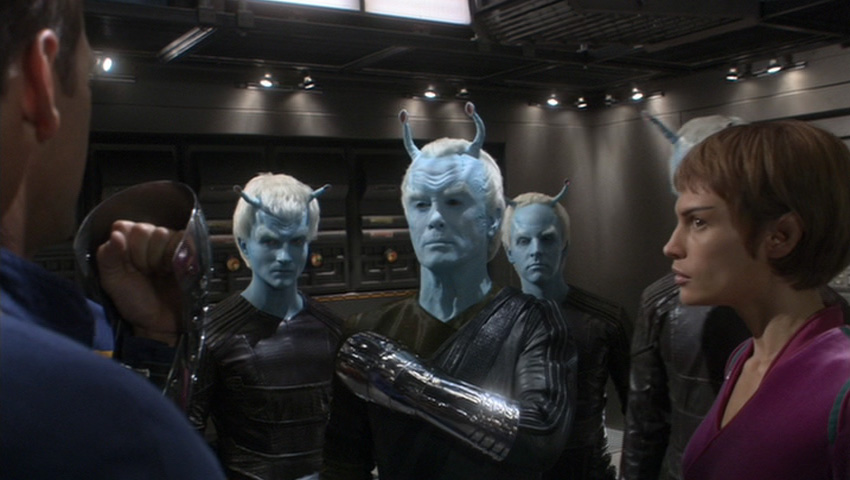
What doesn’t hold up
Part three is the weakest of the episodes, which was a problem in the mini-arcs of season four. Lots of build up, weaker payoff.
I’ve also always been slightly put off by the idea that only humans could have the patience/adaptability to deal with the other species and to get them to unite together. This is a major thread of the fourth season, and Archer actually tells Shran and the Tellarites that they should start acting more like humans. It’s pretty freaking arrogant, frankly. Granted, the other species seem pretty headstrong, but the generalizations about them — Andorians are arrogant, Tellarites are combative — are just that, generalizations.
It makes humanity’s role seem really important, but only if you accept the conceit that the aliens we’ve encountered are one-dimensional — or, at least, the ones that would be part of the Federation. This might be a big reason why I prefer the third season to the fourth. The Xindi end up being so much more layered and interesting than the Andorians or Tellarites. It’s also why the Vulcan three-parter is the strongest of the arcs, as the Vulcans (thankfully) get good and compelling texture.
Lastly, I don’t quite buy that Archer could end the struggle with Shran by incapacitating him. The idea is that Shran is so impressed that Archer respected his culture that he would put aside his anger against the Tellarites. Sorry, but that’s goofy. It would have made more sense to cut out the “fight to the death!” and have Shran come to his senses because of the Romulan threat.
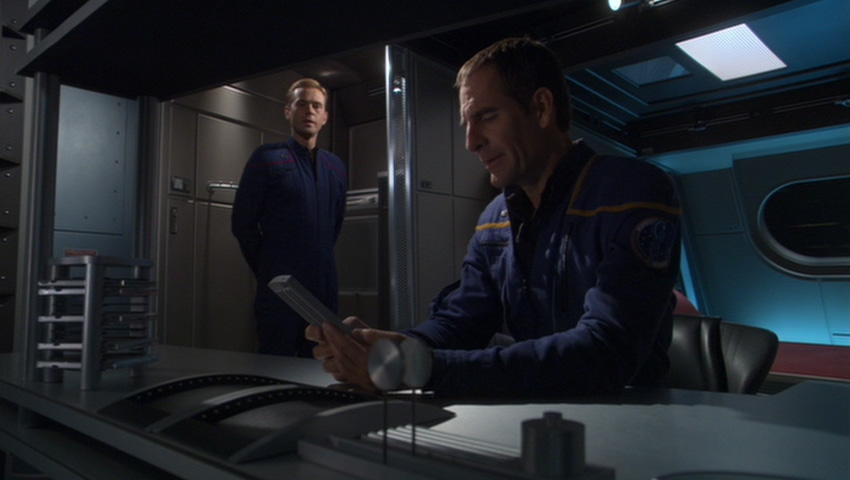
Final thoughts
I haven’t really gotten into the Tucker-T’Pol stuff that started in the third season and continued into the fourth. There are parts of it I really liked, but the will-they/won’t-they gets extremely repetitive (especially, knowing what we know of the series finale). The best part about it was that it opened up the T’Pol character, making her more interesting than she was in the first two seasons. Of course, it’s too bad that the main female character on the show had to have a love interest to become more interesting. Sigh.
We’ll talk more about the Tucker transfer in subsequent episodes, as I’m not crazy about the way the characters handled it (particularly the writing and acting for Archer). But more on that to come.
Coming later this week …
Fan service at its greatest (and most absurd) heights. We’re getting canceled? Better explain why Klingons didn’t have forehead ridges in TOS!

